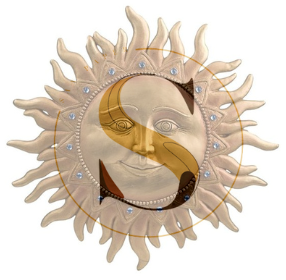Charles V Cipher
A 1547 cipher letter from the King of Spain has been solved
Holy Roman Emperor Karl V and King of Spain Carlos I
Charles/Karl/Carlos was the most powerful ruler in 16th century Europe. He inherited the conglomerate Habsburg lands in Central Europe and then added Spain and Portugal to his titles along with the American territories that had been conquered by Spanish adventurers. He was not a man to mess with; but the English House of Tudor caused aggravation to Charles and to his son Phillip II, who, incidentally, married Mary Tudor (Bloody Mary).
Read all about it here
https://www.bbc.com/news/world-europe-63757443
King-Emperor Charles wrote to his ambassador at the French court in 1547, soon after the death of King Henry VIII of England. He used a cipher form common to Princes and Prelates of that period – a NOMENCLATOR – pronounced / nomen CLAY tor/
What is a Nomenclator?
It is a hybrid form of secret writing which combines substitution together with code words or symbols. These codes or symbols reflect the name of the cipher itself (Latin NOMEN): they stand for the names of powerful and prestigious persons.
Important Roman patrons employed ‘name-rememberers’ to announce the name and title of visitors. These reminder-men were often Greeks with good memories and a grasp of mnemonic techniques.
Charles used a stick man to represent Roy d’Angleterre – the late King Henry VIII. You might expect a bloated fruit to symbolise the sack of corrupt flesh that encased Henry at the end of his reign. Perhaps the King-Emperor Charles enjoyed an ironic sense of humour.
Cryptonym
This is the fancy title for a code name given to military operations and to Top VIPs such as the US President and his family.
Substitution
A nomenclator cipher employed invented alphabets where the number of possible substitutions expands according to the frequency of letters in plain text. This frequency varies with languages. The letter E (a b c d E) stands out in French and English and must be disguised. The invented alphabet also includes nulls or meaningless letters which the decipherer ignores.
Of course, both the encipherer and the decipherer must have a copy of the same cipher plan and such plans became large and unwieldy by the end of the 16th century. The Nomenclator resembled a parlour game for highly educated gentlemen.
ALTERNATIVES?
Yes, there were alternatives to nomenclators. Porta, Bellaso, and later Vigenère, described polyalphabetic ciphers in the 16th century. They were more secure than the Nomenclator/Code Book methods which risked loss of the key texts. These polyalphabetics did not appeal to the gentlemen in charge who regarded them as mechanical and inelegant.

